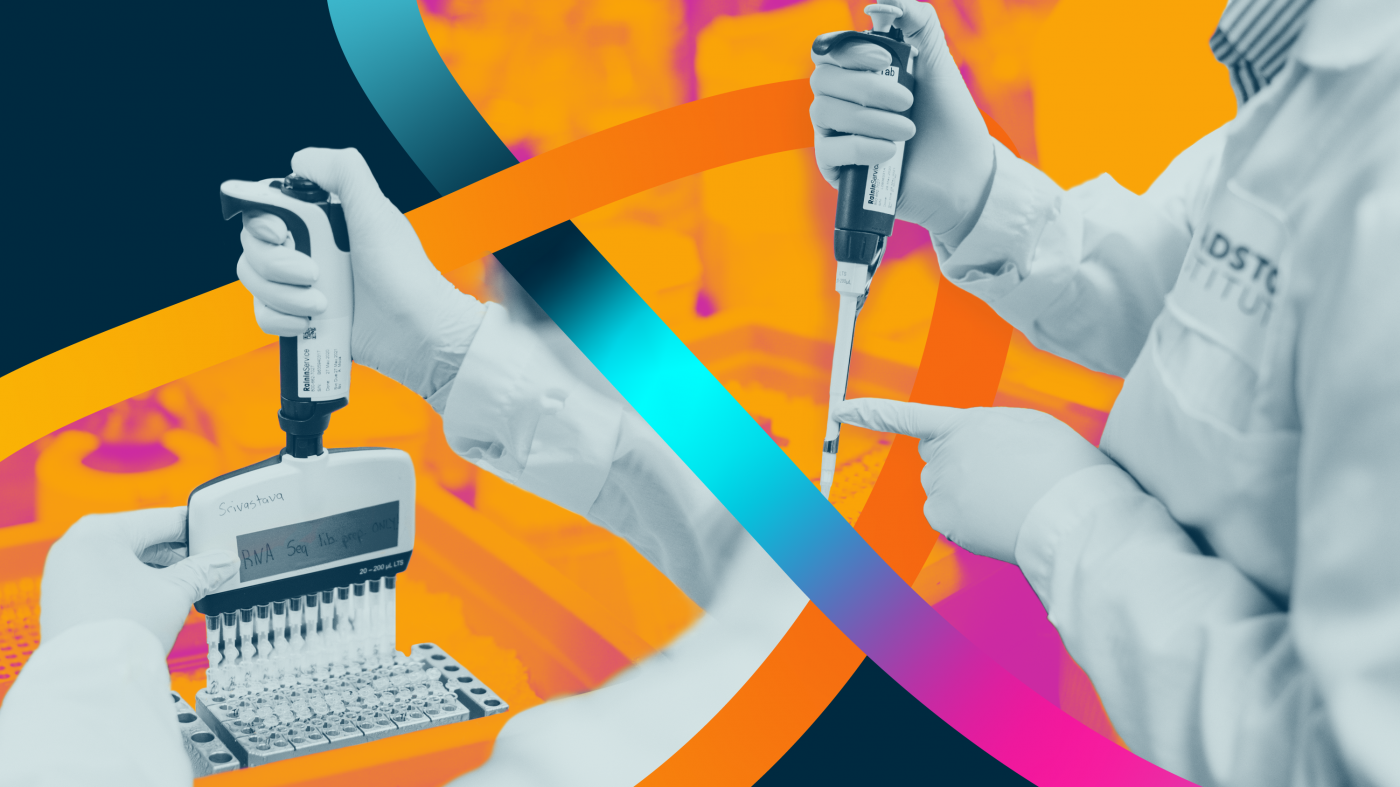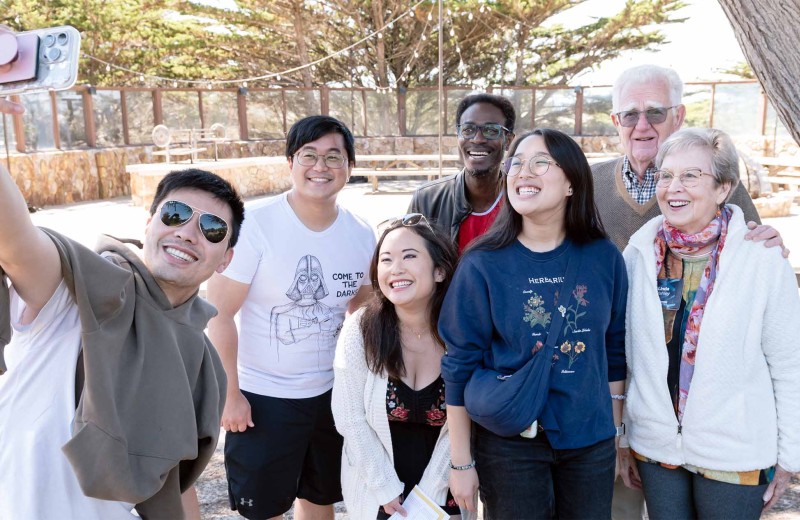Gladstone NOW: The Campaign Join Us on the Journey✕

Gladstone graduate students describe their favorites parts of working at Gladstone.
Graduate students are an integral part of Gladstone’s community and a key driver of our scientific achievements. In honor of Graduate Student Appreciation Week, we asked some of our graduate students about the most exciting part of their work and what they like best about working at Gladstone.
Emily Bulger, McDevitt Lab
What is the most exciting part of your work?
My work uses 3D in vitro models of human development called organoids to decipher patterns in human development. The most exciting part of my work is seeing patterns emerge in this simplified model system that would be really hard to uncover in a living organism, and then being able to piece together how that new information fits with decades of lessons learned from in vivo model systems. And pretty fluorescent imaging never hurts!
What drew you to the science you currently work on?
I’ve always been inspired by all of the absurd and incredible (incredibly absurd?) biodiversity on the planet, and understanding development is at the core of understanding how this diversity emerges. My research lets me explore specifically the earliest stages of human development so we can start to piece together how we are similar and different to organisms around us, how patterns emerge, and especially what causes things to go wrong so we can start to generate more effective therapeutics in the future.
Maxine Nelson, Huang Lab
What is the most exciting part of your work?
That I can turn stem cells into human neurons in a dish. I’m still a little giddy when, after weeks of careful, daily care, my little cell babies have differentiated into beautiful neurons with long, delicate processes. And how lucky am I that these little neurons I’ve made may help advance our understanding of Alzheimer’s disease?!
Antara Rao, Huang Lab
What is the most exciting part of your work?
My thesis project involves studying individuals who, despite carrying the toxic APOE4 gene, are resistant to Alzheimer’s disease. As we find more cures to deadly diseases, conquering aging and age-related disorders has become the next new medical frontier. I’m particularly excited to study these Alzheimer’s disease–resistant individuals because any biological mechanisms I find would have strong translational potential.
Morgane Leroux, Paz Lab
What is the most exciting part of my work?
For my PhD project, I am using the patch-clamp technique, which consists of recording the electrical activity of neurons in brain slices in real time. It’s really exciting to inject a current stimulation into a neuron and to observe the neuron’s response on the screen. By recording the voltage of neurons in real time, we can say if they are healthy, unhealthy, tired, more or less excited, etc...and I find it super cool!
What do you like about working at Gladstone?
I am part of Jeanne Paz’s lab and all my coworkers are amazing! Everyone helps each other and new members are always warmly welcomed. I can't wait for the COVID-19 situation to improve so we can meet up in person again for birthdays and fun activities with the lab.
Oscar Yip, Huang Lab
What is the most exciting part of your work?
I find the translatability and real-world applications of my research in Alzheimer’s disease in Yadong Huang’s lab the most exciting part of my work. Alzheimer’s is a devastating disease that affects so many people and yet still has no cure. Getting the opportunity to work so closely to a human disease that I have a personal connection to and contribute to society’s better understanding of it is very rewarding.
Want to Join the Team?
Our people are our most important asset. We offer a wide array of career opportunities both in our administrative offices and in our labs.
Explore CareersMeet Gladstone: Oscar Yip
Meet Gladstone: Oscar Yip
Oscar Yip is advancing Alzheimer’s research in Yadong Huang’s lab at Gladstone while drawing inspiration from his family, community, and his broader goal of helping patients.
Graduate Students and Postdocs Profile Alzheimer’s DiseaseFrom Mentorship to Legacy: Creating Opportunity for Early Career Scientists
From Mentorship to Legacy: Creating Opportunity for Early Career Scientists
Robert and Linda Mahley’s commitment to trainee development continues through Gladstone’s annual Career Advancement Awards.
Graduate Students and Postdocs HistoryWhen Brain Cells Talk: NOMIS-Gladstone Fellow Yuliya Voskobiynyk on Decoding Microglia’s Secret Signals
When Brain Cells Talk: NOMIS-Gladstone Fellow Yuliya Voskobiynyk on Decoding Microglia’s Secret Signals
NOMIS–Gladstone Fellow Yuliya Voskobiynyk, PhD, shares her journey from Ukraine to Gladstone and how her research on microglia could shed light on brain function and diseases like epilepsy and Alzheimer’s.
Graduate Students and Postdocs Profile Neurological Disease NOMIS



